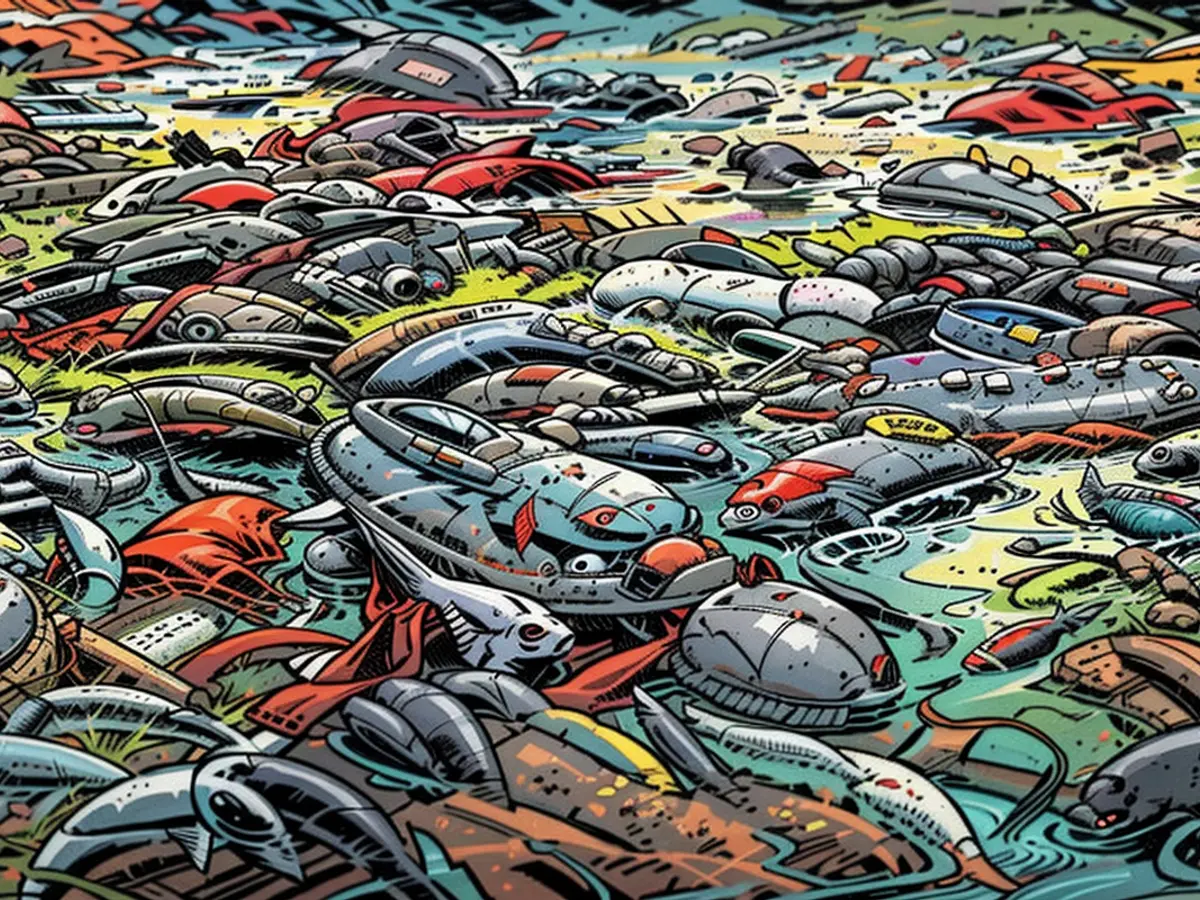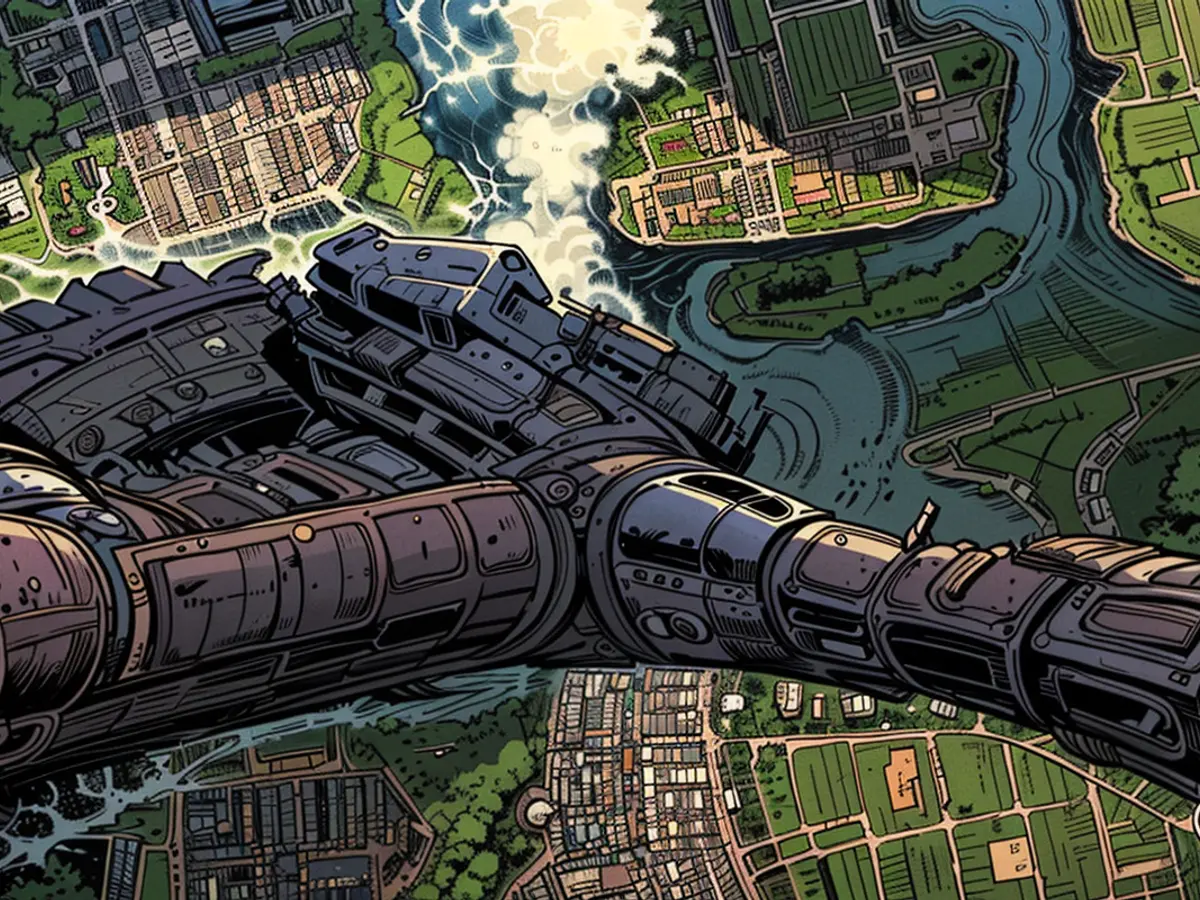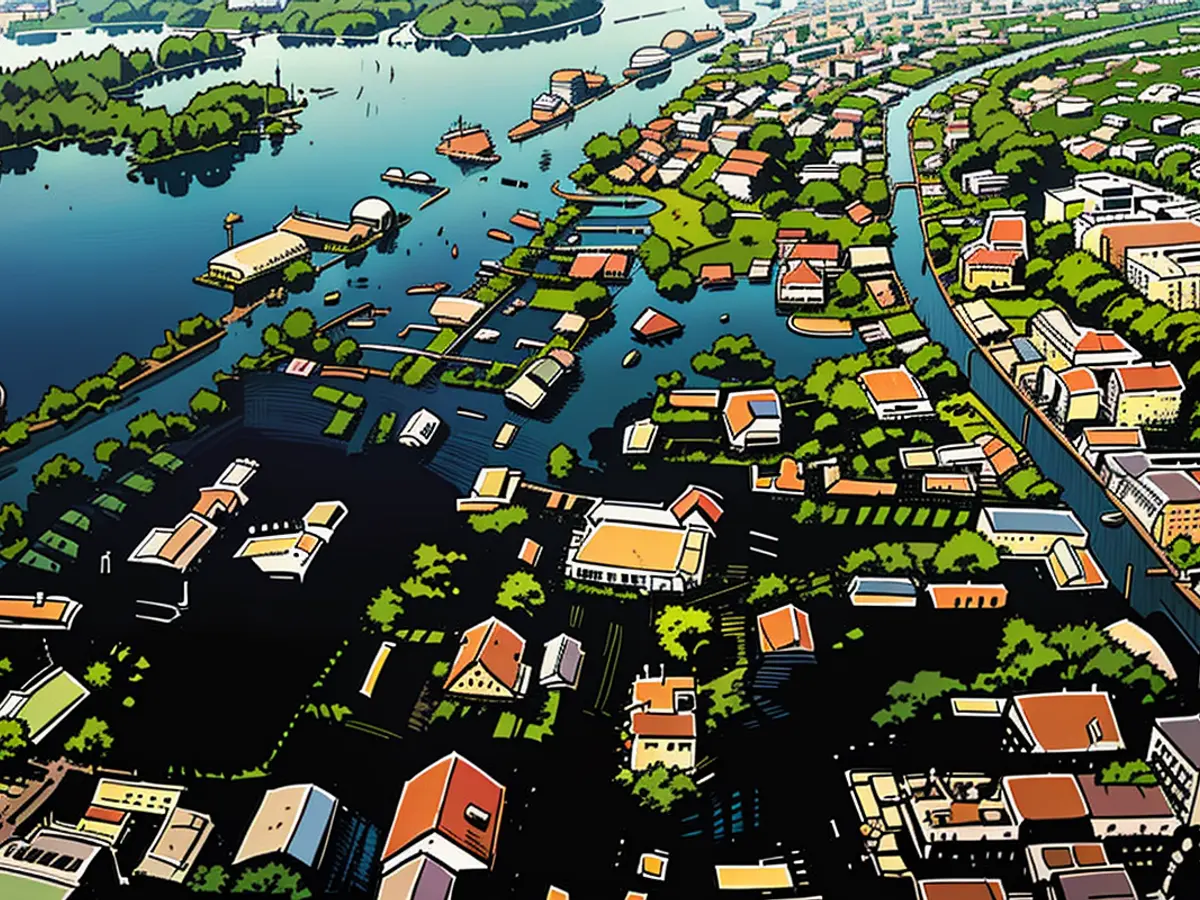Today's appearance of the demolished Kachowka Dam
A year has passed since the Kachowka dam broke, seemingly via detonation. This resulted in catastrophic floods across the Cherson region in southern Ukraine, potentially leading to a severe environmental catastrophe. Desertification was a major concern, yet) how has the situation evolved since then?
The heart-wrenching images of flooded homes and settlements, mass fish deaths, and the damaged Kachowka dam on the Dnipro River left a deep mark on the Ukrainian people, along with the horrors of the Russian war. Twelve months have passed since the dam's destruction, which wouldn't have occurred had it not been for the ongoing three-year Russian invasion. But what effects has the disaster of June 6, 2023 had on the environment?
Experts from the environmental protection organization, the Ukrainian Nature Conservation Group (UNCG), are thrilled at the new habitats that have emerged. The organization is not keen on the proposed reconstruction of the dam, as they fear that the reserves will dry out. Iwan Mojsijenko, a biologist, explains that the National Park Velykyi Luh will be flooded as a wetland during the spring flood for the first time in 90 years. This is significant since the reservoir no longer exists, and the Dnipro's water flows towards the Black Sea.
The ecosystems are recovering, with the feared large-scale desertification not materializing. To the surprise of many, extensive swamp areas and marshlands, prevalent before the reservoir was flooded in the dam, have returned. Furthermore, an entire new ecosystem has started growing at the bottom of the former reservoir. "This is a momentous event for biodiversity," said Mojsijenko. The flowing water brings organic material that enriches the soil and washes plant seeds onto it, aiding vegetation recovery and providing a vital habitat for aquatic birds and other animals.
Flood left devastation in its wake
Exactly one year ago, in the early hours of June 6, the dam of the Kachowka hydroelectric power plant on the lower Dnipro River collapsed, allegedly due to a detonation. President Volodymyr Zelensky accused Russia of mining and blowing up the dam. However, Vladimir Putin, commander of the Russian military occupying most of the occupied Cherson region and annexing it, countered this claim, stating that Ukraine itself had destroyed the dam with rocket launchers. It was also noted that the dam was in a poor condition before the war. The high pressure of the stored water could have played a role in the collapse too.
Approximately 18.5 cubic kilometers of water, released over four days, flooded more than 80 settlements, affecting around 26,000 hectares of land – roughly the size of Berlin. The flood killed over 60 people, injured more than 800, left many more without their property, and claimed the lives of tens of thousands of animals. Around 1.5 million people lost access to clean water. By October, the government had estimated the damage at approximately 12.9 billion euros.
The flood drowned agricultural land and damaged irrigation systems for agriculture. Grain storage in Ukraine was heavily affected by the surges of mud carrying heavy metal-contaminated industrial waste. The environmental disaster impacted some of the most fertile soils in Europe, particularly the unique plant life in the Dnieper River's delta. Oil, lubricants, and other toxic chemical substances polluted the water.
At the time, President Zelensky termed it the biggest man-made environmental disaster in recent European history. He likened it to the devastating consequences of using a "mass destruction weapon." However, scientists have always focused on offering measured assessments.
"A sea of greenery stretching endlessly"
One year on, there's no trace of the reservoir that had existed for about 60 years. According to Vadym Maniuk, an ecologist, "there's an endless sea of greenery here" at the dam site, reported by the Ukrainian public broadcasting service. A forest of willows, standing approximately 2.5 to 3.5 meters high, has formed in the absence of water on the former lake bed. This was long anticipated, as willows are common pioneer trees in riverbanks on sandy soils.
Although the forest is still new, native species like reeds and water-crowfoot are beginning to sprout from the cracks in the ground. However, with increasing drought, these could eventually disappear, allowing willows to thrive. The journal "Science" presented a comprehensive analysis, explaining that much biomaterial like mussels still rots on the ground. There's also a potential risk of mosquitoes, disease-spreading insects, and other blood-sucking creatures spreading due to the numerous smaller wetland areas. It is anticipated that the region will become hotter in the long run, given the absence of the cooling effect of the reservoir.
More dangers are imminent for scientists in the war-torn zone. Recently, UNESCO experts voiced concerns over the destruction of nature's unique habitats, which include endangered ant species, reptiles, amphibians, bird nesting sites, and mammals. Approximately 70% of the Birch Mouse's habitat (Sicista loriger) was lost due to flooding, potentially putting the species on the brink of extinction. The Sand Blind Mouse (Spalax arenarius) also had half of its population wiped out, mentioned the organization's experts in their report.
A complete evaluation of the environmental situation and damage has yet to be carried out. The complexity of the situation arises from the fact that Russia has seized large parts of the Cherson region in their ongoing conflict with Ukraine. Russian and Ukrainian forces continue to engage in combat in the region. The Russian government has consistently downplayed the impact of the disaster, and the topic is rarely discussed in Moscow.
It is not safe for researchers to measure water quality or assess damages. After last year's flood, explosives hidden in the ground were extracted and dispersed. This only adds to the chaos. Only when the conflict is resolved, asserts UNCG, can a thorough investigation into how the battles have affected the environment be conducted. However, it is clear that the environmental damage extends far beyond the destruction of the dam.


Read also:
Despite the ongoing attack on Ukraine, efforts towards environmental education have not waned. Ukrainian schools are integrating lessons on the Kachowka dam disaster into their curriculum, aiming to raise awareness about environmental preservation and disaster recovery.
Following the Kachowka dam disaster, there has been a renewed focus on international cooperation during the Russian invasion of Ukraine. Environmental organizations from various countries are collaborating to monitor the environmental impact of the conflict, with the hope of preventing further environmental disasters and mitigating existing damage.







